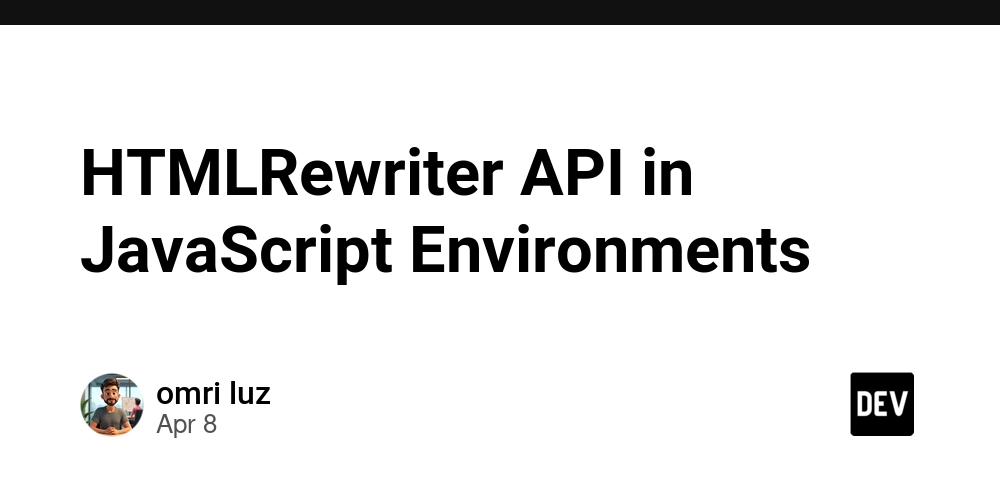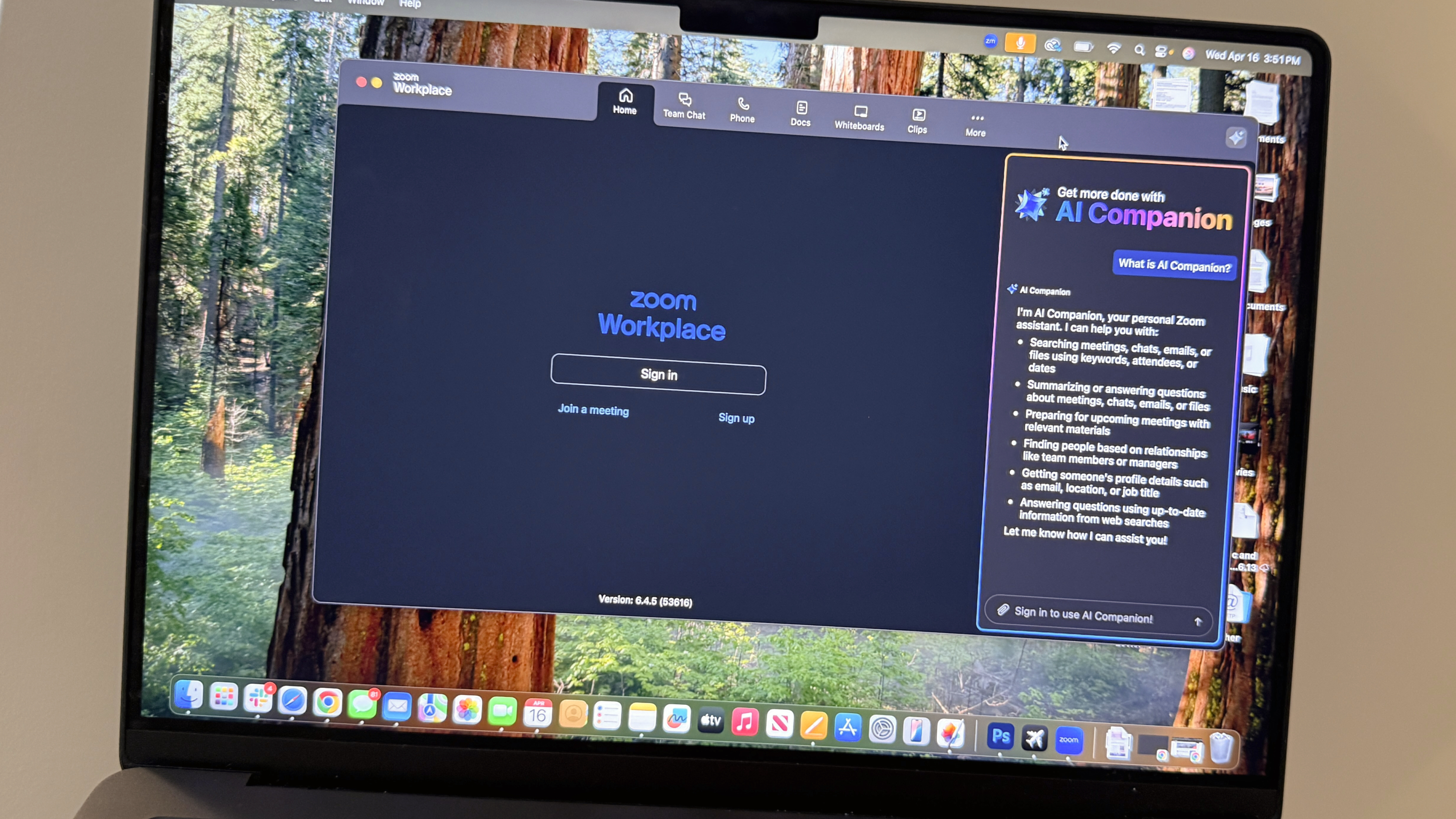HTMLRewriter API in JavaScript Environments
Comprehensive Guide to the HTMLRewriter API in JavaScript Environments Historical Context The HTMLRewriter API is a relatively recent addition to web technology, specifically designed to manipulate HTML responses as they are being generated. Its development was motivated largely by the need for a flexible and efficient way to rewrite HTML directly within JavaScript environments, particularly in serverless architectures such as Cloudflare Workers. Historically, web developers used traditional libraries and frameworks to manipulate HTML on the client-side (e.g., jQuery) or server-side templating engines (e.g., EJS, Pug). The rise of single-page applications (SPAs) and serverless functions necessitated a more dynamic approach, leading to the creation of APIs like HTMLRewriter. The arrival of this API catered to the desire for a lightweight, efficient solution that integrates seamlessly with modern web technologies. The HTMLRewriter API allows developers to perform transformations on HTML as it flows through the system, providing hooks to modify elements, attributes, and text directly. This capability can vastly improve performance and developer experience, especially in scenarios where traditional DOM manipulation would introduce unwanted overhead or complexity. Technical Overview Core Concepts The HTMLRewriter API operates on a stream-based approach. This means that rather than loading an entire HTML document into the memory for manipulation, developers can define rules that act on the document's structure in real-time. The behavior is defined by creating an instance of HTMLRewriter, where developers specify how to handle elements, attributes, and text nodes. Key Components of HTMLRewriter: Transformations: Declare transformations for specific HTML tags using on method. Text Manipulation: Handle text content within tags and text nodes using methods like text and after. Attribute Manipulation: Alter attributes of elements in a straightforward manner. Example Code Implementation Below is an example that demonstrates a basic usage of the HTMLRewriter API: const rewriter = new HTMLRewriter() .on("h1", { element(element) { element.setInnerContent("Hello World!", { html: true }); } }) .on("img", { element(element) { // Modify the src attribute const src = element.getAttribute("src"); element.setAttribute("src", src + "?v=1.0"); // Cache busting } }); // Fetching an HTML response and rewriting it async function handleRequest(request) { const response = await fetch(request); return rewriter.transform(response); } Complex Scenarios In real-world applications, rewriting will often go beyond simple attribute changes. Below is an example of how to perform more complex operations, such as conditionally rewriting content based on specific criteria. const rewriter = new HTMLRewriter() .on("a", { element(element) { const href = element.getAttribute("href"); // Rewrite URLs based on certain conditions if (href.startsWith("/internal")) { element.setAttribute("href", "/external" + href); } } }) .on("p", { text(text) { // Append a disclaimer text to all paragraph elements text.setInnerContent(text.text + " - This content may be subject to change."); } }); // Serverless function example async function handleRequest(request) { const response = await fetch(request); return rewriter.transform(response); } Advanced Implementation Techniques Handling Nested Elements One of the challenges with manipulating nested elements is ensuring that the transformations apply at the right level. The HTMLRewriter facilitates this through its flexibility in specifying element contexts. const rewriter = new HTMLRewriter() .on("div.comment", { element(element) { // Hide comment section if it has no children const hasChildren = element.getChildNodes().length > 0; if (!hasChildren) { element.remove(); } } }) .on("script", { element(element) { // Remove all script tags element.remove(); } }); Edge Cases Dealing with Invalid HTML The API is designed to handle various malformed HTML structures. However, extraordinary care should be taken when manipulating such documents. Defensive coding practices are advisable: Validation: Confirm that elements/attributes exist before operating on them. Error Handling: Wrap your transformations with try-catch blocks to gracefully manage runtime exceptions. Performance Considerations and Optimization Strategies The HTMLRewriter operates in a streaming manner, fundamentally designed to be performant. Here are some guidelines to ensure optimal performance when using the API: Minimize DOM Manipulations: The fewer modifications performed, the faster the response time. Grou

Comprehensive Guide to the HTMLRewriter API in JavaScript Environments
Historical Context
The HTMLRewriter API is a relatively recent addition to web technology, specifically designed to manipulate HTML responses as they are being generated. Its development was motivated largely by the need for a flexible and efficient way to rewrite HTML directly within JavaScript environments, particularly in serverless architectures such as Cloudflare Workers.
Historically, web developers used traditional libraries and frameworks to manipulate HTML on the client-side (e.g., jQuery) or server-side templating engines (e.g., EJS, Pug). The rise of single-page applications (SPAs) and serverless functions necessitated a more dynamic approach, leading to the creation of APIs like HTMLRewriter. The arrival of this API catered to the desire for a lightweight, efficient solution that integrates seamlessly with modern web technologies.
The HTMLRewriter API allows developers to perform transformations on HTML as it flows through the system, providing hooks to modify elements, attributes, and text directly. This capability can vastly improve performance and developer experience, especially in scenarios where traditional DOM manipulation would introduce unwanted overhead or complexity.
Technical Overview
Core Concepts
The HTMLRewriter API operates on a stream-based approach. This means that rather than loading an entire HTML document into the memory for manipulation, developers can define rules that act on the document's structure in real-time. The behavior is defined by creating an instance of HTMLRewriter, where developers specify how to handle elements, attributes, and text nodes.
Key Components of HTMLRewriter:
-
Transformations: Declare transformations for specific HTML tags using
onmethod. -
Text Manipulation: Handle text content within tags and text nodes using methods like
textandafter. - Attribute Manipulation: Alter attributes of elements in a straightforward manner.
Example Code Implementation
Below is an example that demonstrates a basic usage of the HTMLRewriter API:
const rewriter = new HTMLRewriter()
.on("h1", {
element(element) {
element.setInnerContent("Hello World!", { html: true });
}
})
.on("img", {
element(element) {
// Modify the src attribute
const src = element.getAttribute("src");
element.setAttribute("src", src + "?v=1.0"); // Cache busting
}
});
// Fetching an HTML response and rewriting it
async function handleRequest(request) {
const response = await fetch(request);
return rewriter.transform(response);
}
Complex Scenarios
In real-world applications, rewriting will often go beyond simple attribute changes. Below is an example of how to perform more complex operations, such as conditionally rewriting content based on specific criteria.
const rewriter = new HTMLRewriter()
.on("a", {
element(element) {
const href = element.getAttribute("href");
// Rewrite URLs based on certain conditions
if (href.startsWith("/internal")) {
element.setAttribute("href", "/external" + href);
}
}
})
.on("p", {
text(text) {
// Append a disclaimer text to all paragraph elements
text.setInnerContent(text.text + " - This content may be subject to change.");
}
});
// Serverless function example
async function handleRequest(request) {
const response = await fetch(request);
return rewriter.transform(response);
}
Advanced Implementation Techniques
Handling Nested Elements
One of the challenges with manipulating nested elements is ensuring that the transformations apply at the right level. The HTMLRewriter facilitates this through its flexibility in specifying element contexts.
const rewriter = new HTMLRewriter()
.on("div.comment", {
element(element) {
// Hide comment section if it has no children
const hasChildren = element.getChildNodes().length > 0;
if (!hasChildren) {
element.remove();
}
}
})
.on("script", {
element(element) {
// Remove all script tags
element.remove();
}
});
Edge Cases
Dealing with Invalid HTML
The API is designed to handle various malformed HTML structures. However, extraordinary care should be taken when manipulating such documents. Defensive coding practices are advisable:
- Validation: Confirm that elements/attributes exist before operating on them.
- Error Handling: Wrap your transformations with try-catch blocks to gracefully manage runtime exceptions.
Performance Considerations and Optimization Strategies
The HTMLRewriter operates in a streaming manner, fundamentally designed to be performant. Here are some guidelines to ensure optimal performance when using the API:
Minimize DOM Manipulations: The fewer modifications performed, the faster the response time. Group transformations when applicable.
Use Filters: Use precise selectors to limit which elements you rewrite instead of broadly selecting elements, minimizing the overhead of traversing the DOM.
Efficient Caching: When modifying attributes that do not change frequently (like image sources or included scripts), implement caching strategies to avoid repeated fetches and transformations.
Comparative Approaches
When comparing the HTMLRewriter API to traditional methods, a few points stand out:
HTMLRewriter vs. jQuery: jQuery operates on the client side, loading the full document into memory, whereas HTMLRewriter processes streams, which can result in lower memory usage and better performance on high-traffic applications.
HTMLRewriter vs. Templating Engines: Traditional templating engines like Handlebars involve server-side rendering and more substantial overhead. HTMLRewriter offers a dynamic approach that allows for adjustments to be made to live responses.
Real-World Use Cases
A/B Testing: Companies leverage the HTMLRewriter API to serve different versions of content to users dynamically, enabling performance monitoring and user behavior analysis.
Content Personalization: The ability to modify elements in real-time can enhance user experience by personalizing content based on user data or behavior.
Ad Injection: Ads can be conditionally injected into specific areas of a webpage for targeted marketing purposes without altering the application's core structure.
Debugging Techniques
Robust debugging is crucial to the HTMLRewriter's effective use. Here are some strategies:
Logging: Utilize console.log statements within your transformation functions to monitor element identities and transformations applied.
Step-by-Step Transformation: For complex transformations, break the process down into smaller functions to isolate and test individual pieces.
Testing HTML Structures: Make use of various HTML structures in unit tests to ensure that edge cases are covered.
Conclusion
The HTMLRewriter API presents a sophisticated tool for HTML manipulation directly within JavaScript environments. With its streaming architecture, it provides an efficient and powerful way to rewrite HTML responses dynamically. When utilized effectively, it can significantly optimize application performance while allowing for complex manipulation scenarios.
For further exploration and advanced usage of the HTMLRewriter API, you can refer to its official documentation and explore community discussions on platforms like GitHub or Stack Overflow for real-world insight and problems faced by peers in the industry.
As developers continue to push the boundaries of web technologies, mastering the HTMLRewriter API will undoubtedly be a valuable asset for any senior web development professional.







































































































































































![[The AI Show Episode 144]: ChatGPT’s New Memory, Shopify CEO’s Leaked “AI First” Memo, Google Cloud Next Releases, o3 and o4-mini Coming Soon & Llama 4’s Rocky Launch](https://www.marketingaiinstitute.com/hubfs/ep%20144%20cover.png)





































































































































































































![GrandChase tier list of the best characters available [April 2025]](https://media.pocketgamer.com/artwork/na-33057-1637756796/grandchase-ios-android-3rd-anniversary.jpg?#)











































.png?width=1920&height=1920&fit=bounds&quality=70&format=jpg&auto=webp#)

































































































































![Apple M4 13-inch iPad Pro On Sale for $200 Off [Deal]](https://www.iclarified.com/images/news/97056/97056/97056-640.jpg)
![Apple Shares New 'Mac Does That' Ads for MacBook Pro [Video]](https://www.iclarified.com/images/news/97055/97055/97055-640.jpg)
















![The Wheel of Time season 3 ending explained: who dies, who is [spoiler], will there be a season 4, and more questions answered](https://cdn.mos.cms.futurecdn.net/qq8MMqv8MTisstkx3phywA.jpg?#)





















































































































![[Tutorial] Validação de formulário HTML5](https://media2.dev.to/dynamic/image/width=800%2Cheight=%2Cfit=scale-down%2Cgravity=auto%2Cformat=auto/https%3A%2F%2Fdev-to-uploads.s3.amazonaws.com%2Fuploads%2Farticles%2Fw7xaioxg4nc6l85i9igo.png)
